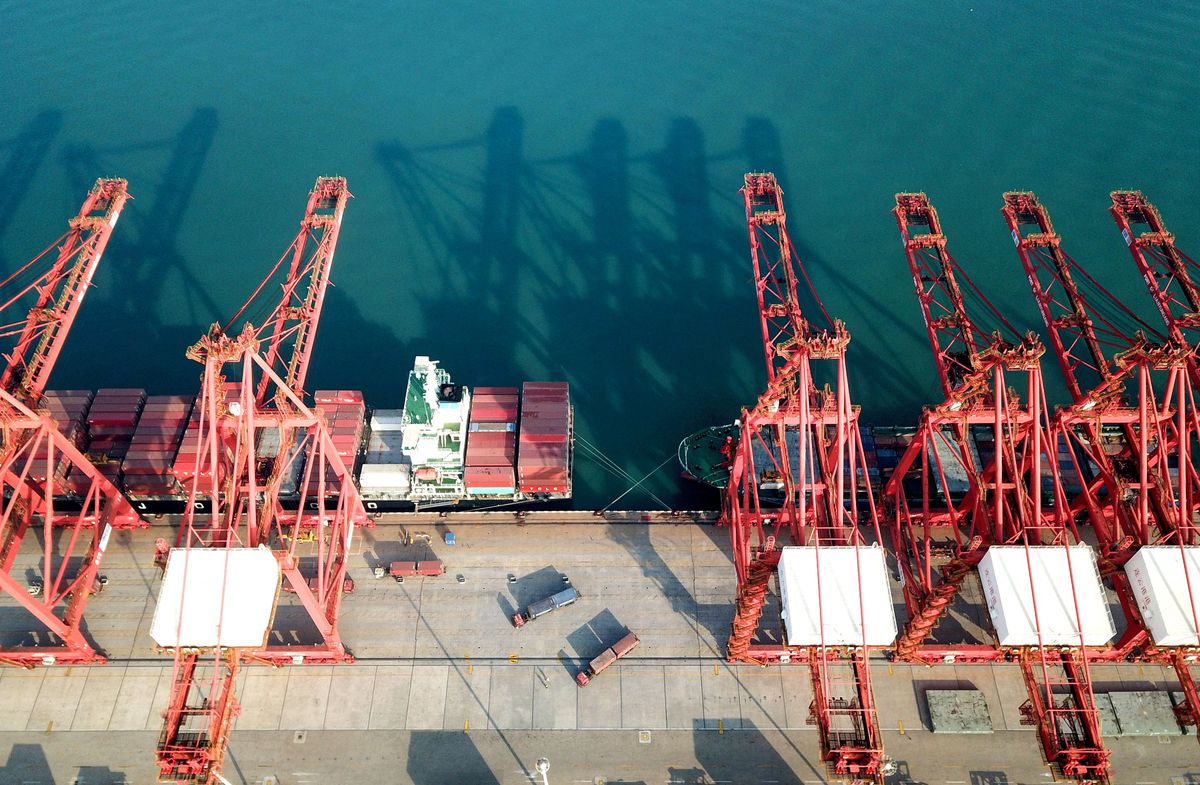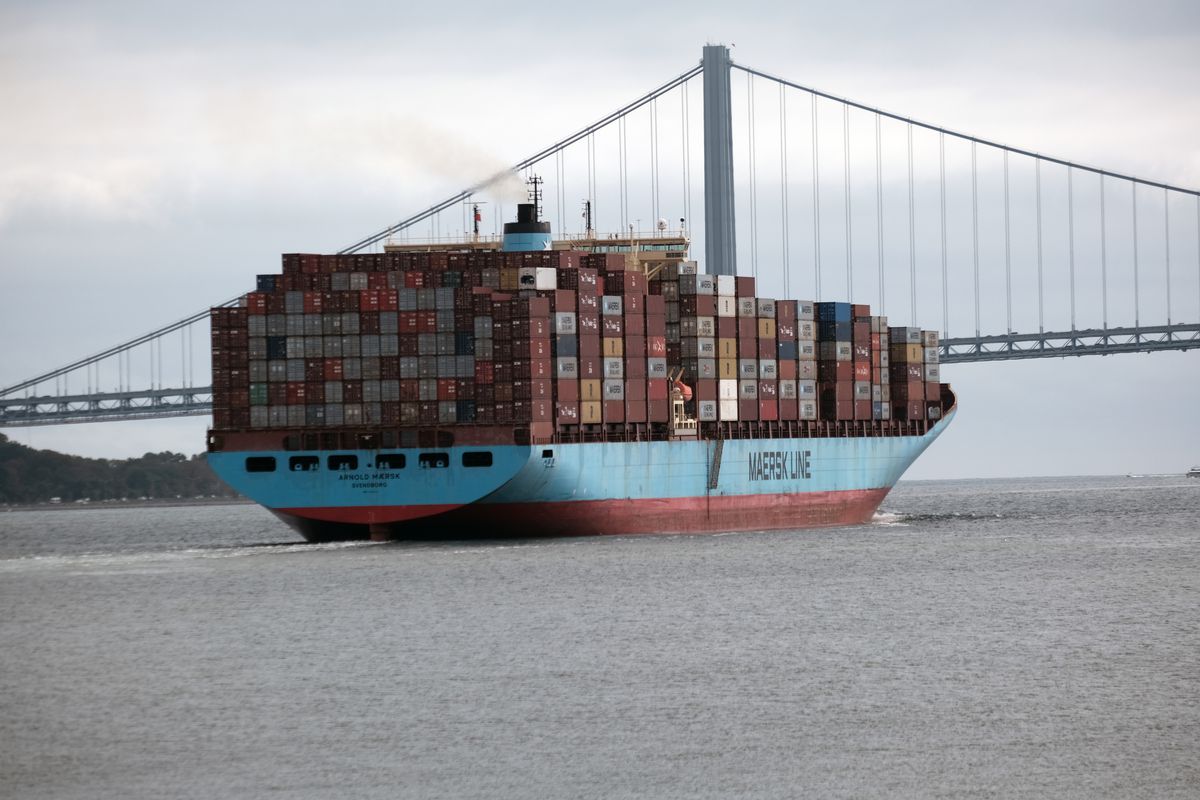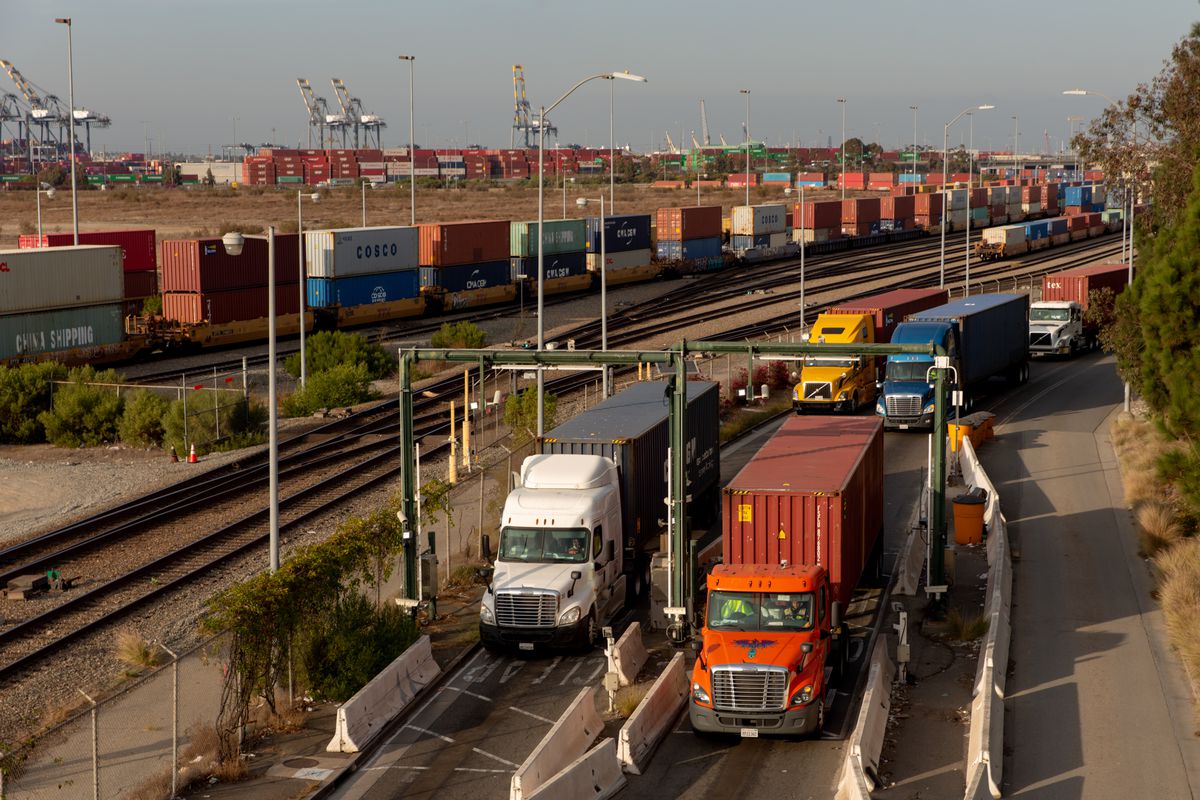Behold the simple shipping container. It’s a large, steel box that can carry tens of thousands of pounds of cargo. It’s also stackable and designed to fit on ocean freight ships, trains, and even trucks. These containers have been an unnoticed cog in the world’s highly complex manufacturing network for decades. But not anymore.
Thanks to the pandemic, the shipping container is now at the center of the global supply chain crisis, which has interrupted the delivery of everything from medical supplies to holiday gifts. Because of widespread manufacturing delays and bottlenecks, there aren’t enough of these boxes in the right place and at the right time. There are also too many containers at shipping terminals, which is clogging up ports and blocking more cargo from arriving. Exporters, meanwhile, are struggling to find the empty containers they would normally use to send their products to customers abroad. These shipping container problems are continuing to pile up as the larger manufacturing system they helped enable also struggles to adapt.
The disruption has gotten so bad that some US politicians want the government to take on a bigger role in regulating shipping. Last week, a bipartisan group of House members passed legislation that would allow the Federal Maritime Commission, the US’s international ocean transportation agency, to pressure shipping companies to prioritize empty containers for American manufacturers and farmers.
We weren’t always so dependent on these big metal boxes, though. The first commercial container ship voyage set sail in 1956, and it was only in the 1980s that this form of ocean freight really took off. As global trade proliferated, businesses realized that containers could make shipping cheaper and easier to manage at scale. Because these containers were standardized — they’re typically 20 feet or 40 feet long — thousands could be loaded onto a single cargo ship at once.
“Previously, most of the goods that moved in containers were manufactured goods made in one country and were being exported to another country,” Marc Levinson, an independent historian who studies the global shipping industry, told Recode. “But starting in the late 1980s, businesses figured out how to combine cheaper shipping thanks to containers with cheaper telecommunications and improved computing to create long-distance supply chains.”
These developments created the foundation for today’s “just in time” approach to global manufacturing. This system has made all sorts of products cheaper to make abroad and allowed individual companies to specialize in niche components, like the chemicals used in plastic packaging and specialty computer chips. It’s also been a boon for the container shipping industry, which rakes in billions of dollars every year moving raw materials, parts, and finished goods between factories before they’re finally delivered to consumers. Even Amazon is trying to break into the cargo shipping business now.
But as the pandemic made clear, this system has plenty of downsides. When one product is made across multiple facilities, a single disruption, like a Covid-19 outbreak, can ripple through the supply chain and cause massive problems. And the pressure to meet stringent delivery timelines can be grueling and even dangerous for people with supply chain jobs, like factory workers and truck drivers. Low-cost manufacturing has also fueled overconsumption in wealthy countries, where consumers have come to expect that the exact product they want will be available on demand.
So how did we get here? To learn more about how the shipping container helped standardize today’s global supply chain — and set us up for our current crisis — Recode spoke with Levinson, who is the author of Outside the Box: How Globalization Changed from Moving Stuff to Spreading Ideas and The Box: How the Shipping Container Made the World Smaller and the World Economy Bigger. As Levinson explains, the shipping container is a lot more complicated than it looks, and solving our supply chain challenges will require far more than just producing more boxes.
The following interview has been edited for clarity and brevity.
Post Contents
Rebecca Heilweil
The world’s entire ocean shipping network seems to rely on these highly standardized boxes. Can you talk about how we became so dependent on these particular shipping containers and what makes them so special?
Marc Levinson
The modern shipping container was first used on domestic shipping routes in the United States in 1956 and has been used internationally since 1966. Like a lot of innovations, it took businesses a while to figure out how to take advantage of them. But starting in the late 1980s, businesses figured out how to combine cheaper shipping — thanks to containers — with cheaper telecommunications and improved computing to create long-distance supply chains.
This was a big change from what existed before. Previously, most of the goods that moved in containers were manufactured goods made in one country and were being exported to another country. But with these cost changes, it became possible to spread out suppliers among countries and to do each part of the manufacturing process where it was most efficient. Manufacturers and retailers began building these sorts of supply chains in the late 1980s.
There might be several stages of these sorts of shipments from one place to another before the finished good is shipped to the end user. That was an entirely new form of trade and is really responsible for these long and complicated supply chains.
Rebecca Heilweil
Can you talk about how standardized these shipping containers are?
Marc Levinson
Most of the shipping is in a container that’s 40 feet long, and it has the same devices at each corner. These are called corner fittings, and they enable a container to be lifted by a crane in any port, rail yard, or truck yard in the world because they’re identical.
There are different sized containers used for domestic freight in the United States. Many domestic container shipments are actually 53-foot containers. And there is a business at certain ports, especially in California, of removing imported goods from 40-foot containers and stuffing them into 53-foot containers to save domestic transport costs.
Rebecca Heilweil
Could you explain the journey of a container through the supply chain?
Marc Levinson
Imagine a factory that is turning out a product. It will stuff that product into a shipping container. Or if it doesn’t have enough to fill a shipping container, it may contract with another company, a freight forwarder, and could share the container with other cargo. The container will be moved to a port by truck or by train. It will be stored on a patio near the docks, awaiting the ship that the cargo owner or the freight forwarder has agreed to use.

When the ship arrives in the port, that container will be moved to the dock and loaded aboard the ship. The loading process is very much computer-driven. Each container is designated to go at a specific location within the vessel. And the outgoing containers are moved next to the ship and lifted by cranes into the proper storage space aboard the ship. This process can take anywhere from a few hours to several days, depending on the size of the vessel.
The ship sails a specific route. Typically with container shipping, a shipping line offers a specific weekly service on a single route. It’s called a string. So every Tuesday, the vessel will leave this port, and it will call at this other port three days later, and will call at this other port 10 days later. And 22 days later, it will arrive at the final destination.
Then it will sail back to port where it began, with stops at ports along the way, and keep that route with an identical ship on a weekly basis.
Rebecca Heilweil
It sounds like the system is pretty dependent on recycling these containers again and again and again.
Marc Levinson
This entire movement — from the factory to the port to aboard the ship to the arrival port to a rail yard and then finally to a distribution center — it’s all arranged at once. The shipper makes a single arrangement to have essentially end-to-end service, so there’s not a process of negotiating separately with a trucking company, a ship line, and so forth.
Rebecca Heilweil
The pandemic is impacting the availability of so many different types of products, from phones and laptops to basic medical supplies. Can you explain why all of these problems seem to be coalescing around global logistics?
Marc Levinson
Governments around the world stimulated their economies in order to avoid a recession due to the pandemic. Many governments have provided income support to workers who were losing their jobs because of the pandemic. Many governments have pumped money into different kinds of public works programs to keep people employed. Many central banks have lowered interest rates to stimulate their economies. So all of these actions have really driven economic growth.
But at the same time, because of the pandemic, people have had a hard time spending on services. It’s not easy to take a holiday trip. Many restaurants have been closed or people don’t feel comfortable eating in restaurants. It’s hard to go to an indoor concert or theater performance. So there’s been this enormous growth in spending on goods.

There’s just been much stronger trade in goods than people anticipated. Those macroeconomic trends have led to large increases in the volume of containers moving around the world. Because of delays in the process, it’s taking a container longer to go from its origin to its final destination where it’s unloaded, so the container is in use longer for each trip. You’ve just lost a big hunk of the total capacity because the containers can’t be used as intensively.
We’ve had in the United States an additional problem, which is that the ship lines typically charge much higher rates on services from Asia to North America than from North America to Asia. This has resulted in complaints, for example, from farmers and agricultural companies, that it’s hard to get containers in some parts of the country because the ship lines want to ship them empty back to Asia, rather than letting them go to South Dakota and load over the course of several days. So we’ve had exporters in the United States complaining that they have a hard time finding a container that they can use to send their own goods abroad.
Rebecca Heilweil
So how is this impacting those US-based exporters having a hard time shipping goods overseas?
Marc Levinson
It helps to understand how freight transport is arranged. Almost all freight internationally moves under contract. You don’t show up at the dock and say, ‘Here, I’ve got a container. Can I send it?’ A shipper signs a contract with a shipping line for, say, six months, and it guarantees a volume of 100 containers every Tuesday.
So if you are a large shipper of a national retailer or a large international manufacturer, you’ve probably got much better terms of service than if you are a small shipper. If you’ve got a small factory and you send out a couple of containers every week, you don’t have the bargaining power that a multinational manufacturer has. And in the current situation, that determines who has access to containers and who has access to shipping space. The giants may be favored over smaller businesses that just don’t have the bargaining power.
Rebecca Heilweil
We’ve talked a lot about the companies that rely on shipping containers, but what about the shipping industry itself? How much competition is there in the shipping industry right now?
Marc Levinson
The international ocean shipping industry has become highly concentrated over the years due to mergers. These are attributable in part to the enormous cost of building large container ships. If new players want to come into that industry, I think that’s a good thing. It will increase competition in container shipping and I think that will probably benefit consumers. There are some specific issues related to Amazon in terms of carrying freight for third parties who may be its customers as well as its competitors.

Rebecca Heilweil
Could you elaborate on the specific issues related to Amazon?
Marc Levinson
Amazon arranges shipping for much of the cargo that it owns and sells directly, but it also can arrange shipping for other parties, like, for example, companies that sell on Amazon Marketplace. In some cases, these vendors are competing with Amazon. They sell the same products that Amazon itself sells. Handling the shipping may give Amazon insight into the businesses of its competitors. This relationship between Amazon and sellers on Amazon Marketplace has been something that has been looked at by antitrust authorities and others.
Rebecca Heilweil
Is there anything else that you would do to improve the situation right now, even amid all these very large macroeconomic trends?.
Marc Levinson
Many of the container ship lines that still exist have grouped themselves into alliances. You’ve got three alliances of ship lines that can dominate world trade, and there have been accusations that there’s not enough competition in ocean shipping because of these alliances. Governments in the United States, Europe, and Asia may want to take a look at that and consider whether the alliances are a good thing or whether they’ve gone too far.
There are also some communication issues here. It’s hard to get insight into the entire supply chain. Computer systems may not talk to one another. Companies may not want to share information with one another. That may be something that governments look into to see whether they can help improve that situation.
Rebecca Heilweil
Are there things that we should do now to prepare for the next disaster or pandemic?
Marc Levinson
This is a business decision. Individual companies create their own supply chains. My own view is that when companies started building these complicated international supply chains, they focused overwhelmingly on production costs and on transportation costs. They didn’t pay much attention to risk, including the risk of business interruption. It’s pretty obvious that companies now are focusing much more on risk, and that requires potentially a different strategy for managing their supply chains.
Rebecca Heilweil
In the meantime, companies are still struggling to find these boxes. Is it time maybe for us to stop building swimming pools out of shipping containers?
Marc Levinson
I’ve never seen one. I was not aware of that. I’ve certainly seen bars and apartments and retail stores built out of shipping containers. If people find that chic, more power to them.